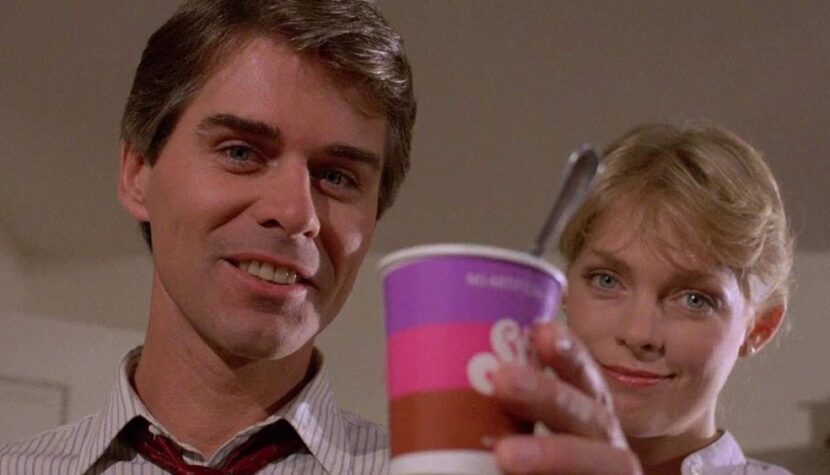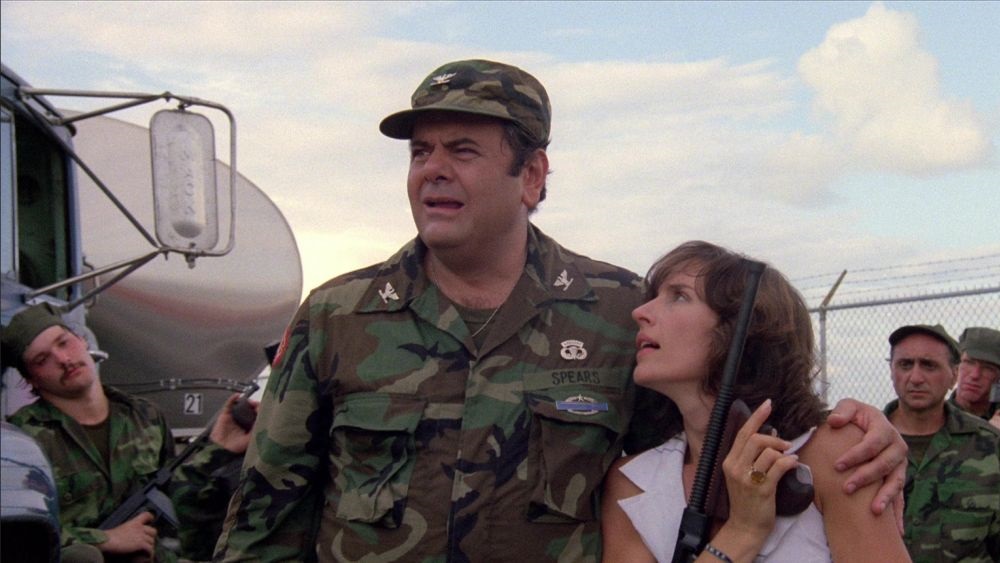THE STUFF. A Still Relevant Satirical Science Fiction Horror

“The Stuff” is one of the best B-movies of the 80s, and references to this satirical production still appear in popular culture (see the third season of Stranger Things).
America has gone crazy for The Stuff – a white dessert whose consistency resembles thick yogurt. The Stuff is sweet, nourishing, and calorie-free. It’s almost everywhere: in supermarkets, the refrigerators of millions of Americans, and all-night cafes where long lines of consumers thirsty for captivating goods even form at night. Large billboards advertising The Stuff hang on building facades, and television constantly airs commercials featuring sexy models praising the new product. “The Stuff is a taste that makes you crave more. You can never have too much The Stuff. The Stuff is a taste that liberates,” proclaims the catchy slogan. The dessert’s popularity quickly pushes the confectionery industry to the brink of bankruptcy, so directors of ice cream, cookie, and other confectionery companies hire David “Mo” Rutherford, a former FBI agent and industrial spy, to take a closer look at the production of The Stuff. It quickly becomes apparent that the popular dessert is addictive and turns people into murderous zombies, and its origin is likely extraterrestrial.

If this sounds somewhat ridiculous, it’s because it’s supposed to be – such was the intention of screenwriter and director Larry Cohen, who conceived The Stuff as a satire on consumerism and the American way of life. “My main inspiration was consumerism and corporate greed in our country and harmful products that have come to market,” as well as “junk food we consume every day. We still eat these things even though some of them kill us. I thought at the time that The Stuff could be an invented product, in this case, ice cream, consumed by millions and causing irreparable harm to humanity. Everyone consumes this delicious food, so how could it be bad for us?” [1]. Filming lasted just over a month, and the budget did not exceed two million dollars; some of the financial outlay went to special effects (construction of mannequins in zombie scenes and a sequence of explosions in the The Stuff processing plant). A mix of ice cream, yogurt, whipped cream, firefighting foam, and fishmeal was used to produce the dessert.
The original version of the film was longer and more sophisticated, but the executives of Gene and Roger Corman’s New World Pictures studio forced Cohen to make numerous cuts in post-production. This was to speed up the action and remove romantic scenes with Rutherford and Nicole, the creator of The Stuff’s advertising campaign. Additional commercials for the deadly dessert were also omitted from the final version of the film. Cohen said he generally agreed with the studio’s demands because some scenes were indeed unnecessary, but he described the process of cutting them as “painful.” Further misunderstandings arose during the distribution of the film: New World Pictures marketed The Stuff as a classic horror film – contrary to Cohen’s intentions, who emphasized the comedic aspect of the whole. “They thought they would get a pure horror with a lot of gore and horror, and we made a film that was more satirical and had a lot of humor and [social] commentary. […] Before the film hit theaters, I already knew that The Stuff would appeal to a different audience than the one we were trying to reach” [2] – the director recounted. And he was right: the film was a commercial failure.

The Stuff gained a second life on television and video. It is a film practically made for both of these formats, and it is not difficult to imagine it on the shelf of some dusty rental store and in the late-night schedule of Polish network Polsat or the now-defunct RTL7. The ridiculous plot, poor special effects, terrible acting, fast pace, and specific atmosphere of the 80s make up a whole that is difficult to take seriously. There is a lot of playing with convention here: the plot resembles a combination of Don Siegel’s Invasion of the Body Snatchers (1956) and Irvin Yeaworth Jr.’s The Blob (1958), and during the characters’ conversation, the name of agent Frank Herbert is mentioned, which is an allusion to the author of Dune, where the addictive spice was also the subject of market maneuvering. The actors also understood the nature of The Stuff: Michael Moriarty gave Rutherford the appropriately exaggerated traits of a shameless hustler, while Paul Sorvino played the idiot colonel with a stone face. On the other hand, satire on consumerism and corporatism today seems even more relevant than 40 years ago. Just turn on the TV to see for yourself.
[1] M. Doyle, Larry Cohen: The Stuff of Gods and Monsters, Bear Manor Media 2015, p. 324–326.
[2] Ibidem, s. 343.

